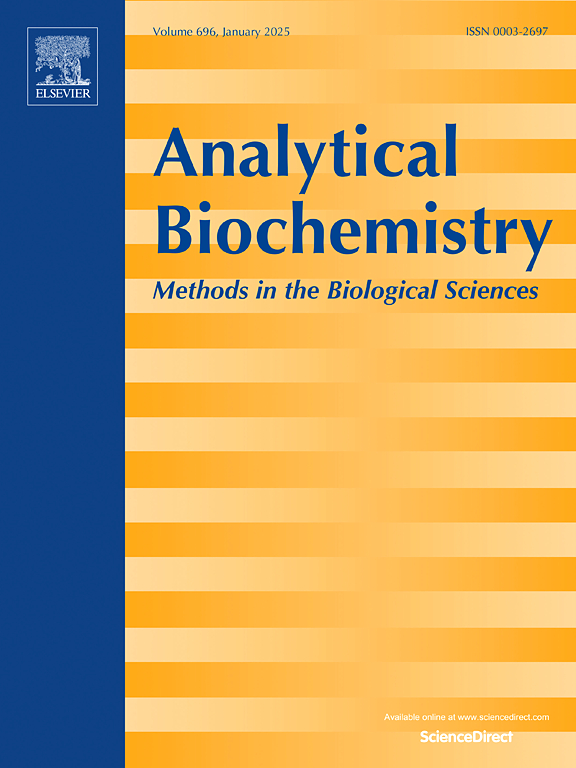Triple DNAzyme cleavage mediated signal cascade for sensitive and reliable Kawasaki disease related microRNA analysis
IF 2.5
4区 生物学
Q2 BIOCHEMICAL RESEARCH METHODS
引用次数: 0
Abstract
MicroRNAs (miRNAs) serve as promising biomarkers for disease diagnosis, therapeutic monitoring, and post-treatment surveillance. However, their accurate quantification remains challenging due to low abundance and sample-derived interference. To address this, we developed an enzyme-free DNAzyme cascade system for highly sensitive miRNA detection. This approach employs programmable DNAzyme hairpin probes (S1, S2, and S3), where the S1 probe features exposed recognition subunits for target-specific miRNA binding. This recognition initiates two steps: the split DNAzyme-mediated middle circuit and the subsequent substrate cleavage catalyzed by DNAzyme to induce signal generation (downstream DNAzyme circuit). The absence of enzymes provides the method with a negligible background signal. The numerous signal cycles facilitated significant signal amplification, resulting in a femtomolar detection limit and enhanced selectivity for several homologous miRNAs. This robust triple DNAzyme cascaded system provides enhanced and reliable approaches for understanding miRNA activity in diverse biological events.

三重DNAzyme切割介导的信号级联用于敏感可靠的川崎病相关microRNA分析
MicroRNAs (miRNAs)是一种很有前景的生物标志物,可用于疾病诊断、治疗监测和治疗后监测。然而,由于低丰度和样品衍生的干扰,它们的准确定量仍然具有挑战性。为了解决这个问题,我们开发了一种无酶DNAzyme级联系统,用于高灵敏度的miRNA检测。该方法采用可编程DNAzyme发夹探针(S1, S2和S3),其中S1探针具有暴露的识别亚基,用于靶向miRNA结合。这种识别启动了两个步骤:分裂DNAzyme介导的中间电路和随后由DNAzyme催化的底物裂解诱导信号产生(下游DNAzyme电路)。由于不含酶,该方法的背景信号可以忽略不计。大量的信号循环促进了显著的信号放大,导致飞摩尔检测限和对几种同源mirna的选择性增强。这种强大的三重DNAzyme级联系统为了解不同生物事件中的miRNA活性提供了增强和可靠的方法。
本文章由计算机程序翻译,如有差异,请以英文原文为准。
求助全文
约1分钟内获得全文
求助全文
来源期刊

Analytical biochemistry
生物-分析化学
CiteScore
5.70
自引率
0.00%
发文量
283
审稿时长
44 days
期刊介绍:
The journal''s title Analytical Biochemistry: Methods in the Biological Sciences declares its broad scope: methods for the basic biological sciences that include biochemistry, molecular genetics, cell biology, proteomics, immunology, bioinformatics and wherever the frontiers of research take the field.
The emphasis is on methods from the strictly analytical to the more preparative that would include novel approaches to protein purification as well as improvements in cell and organ culture. The actual techniques are equally inclusive ranging from aptamers to zymology.
The journal has been particularly active in:
-Analytical techniques for biological molecules-
Aptamer selection and utilization-
Biosensors-
Chromatography-
Cloning, sequencing and mutagenesis-
Electrochemical methods-
Electrophoresis-
Enzyme characterization methods-
Immunological approaches-
Mass spectrometry of proteins and nucleic acids-
Metabolomics-
Nano level techniques-
Optical spectroscopy in all its forms.
The journal is reluctant to include most drug and strictly clinical studies as there are more suitable publication platforms for these types of papers.
 求助内容:
求助内容: 应助结果提醒方式:
应助结果提醒方式:


